|
"Service for the
Worlds Finest Trains"
Authorized Service Center for
Märklin Z
This page applies to Märklin Z
specifically
Note: Märklin has
discontinued most of the motors which fit older Z locomotives. I
have a small stock of motors available, but when they are gone I may not
be able to repair your locomotive if the motor needs replacing.
While Märklin Z is a wonderful
product, its tiny size and light weight require that locomotives wheels and
contacts, track and rolling stock wheels be kept perfectly clean at all times
for best performance. Simply said, current cannot pass through dirt.
Dirt and old solidified oil are the biggest enemy of your tiny Z models and will
damage them. Solidified oil WILL cause motors to burn out and gears to
strip. Dirt also causes the plating on locomotive wheels to wear faster,
which leads to premature replacement of the drive axles and wheels.
Remember, when wheels and rails get minute scratches from dirt wear, they hold
dirt more easily and you find yourself struggling with current pickup issues
constantly. Lastly, if your Z has been stored for many years, don't take a
chance with it, send it in for cleaning.
My locomotive doesn't run, but
the light are on......Solidified oil syndrome a common issue
If a locomotive does not run, but
the lights come on, REMOVE it from the track immediately and send it for
service. If the lights are getting power, so is the motor. It takes
seconds to damage a Z motor when the mechanism is locked up from solidified oil.
Models produced prior to the last 5 years or so will eventually suffer from this
bad oil syndrome. It is common in Z and HO, but HO motors are less likely
to be damaged due to their size. Symptoms range from sluggish running to
not running at all. If a locomotive is running sluggishly, please save
yourself money and send it in for service. It is a myth that a sluggish Z
locomotive can be oiled and put back into service. Will it work?
Yes, it will help temporarily, but what happens is the solidified oil residue
(see pictures I have posted) mixes with the new oil and causes excessive
friction and will eventually cause the motor to fail and possibly gears to
strip. At that point a repair that would otherwise only cost a repair
charge and maybe brushes, turns in to parts expense for gears and motors.
All traces of the original oil and its dried residue must be removed from every
surface down to each gear tooth or it can cause the issue to occur at a later
date. I have had many locomotives come in for service (especially steam
locomotives) where they were run with the bad oil and the worm gears are
completely stripped and the mating gears are damaged. This becomes very
expensive when the stripped gear below the worm is one of the main drive axle
gears in the driver set. A driver set is at least $75.00!
General upkeep and
maintenance.....
It is a pain to clean track and
the wheels on locomotives and cars, but there are some tricks that make it
easier. Here is some helpful info on that subject.
1. What do you use to clean
your track? Do not use anything abrasive! No sandpaper or track
cleaning blocks. Isopropyl Alcohol is pretty useless too. I use a
product that has been around for years and is the only solvent you will ever
need to have.... "Ronsonol" brand lighter fluid. It does not affect or
harm plastics and it leaves no residue behind. It is good to keep around
the house for other used like price sticker or adhesive removal, paint removal
tar removal etc. If nothing else touches a spot lighter fluid will.
Wonderful stuff. Wipe the rails with a soft lint free cloth like pieces
cut from an old tee shirt dampened with Ronsonol. When using Ronsonol, I
also use common sense safety measures. It is not explosive, but it is
flammable and contains Naptha (dry cleaning fluid) so take common sense safety
measures.
2. Cleaning locomotive and car
wheels? You guessed it, Ronsonol. I have a trick I use for
rolling stock. Take a section of straight track and lay a facial tissue across the rails. Use the best quality you can find so
they do not tear so easily or double the layers. Next, squirt a little
Ronsonol on the tissue and use your finger to form it down onto the track so you
can see where the rails are. Rail the car and run it back and forth across
the tissue covered rails by hand. You will see dirt from the wheels
deposit on the tissue. Continue until the wheels are clean.
Locomotives can be done similarly. Use a pair of clip leads or a feeder
track to get power to your section of straight track. Use the same
procedure above except you will allow the locomotive to cross from the bare
rails onto the tissue covered area. On diesels and electrics, allow one
power truck onto the saturated tissue at a time and hold the locomotive so the
wheels slip and the loco stays in place. You will see the dirt deposit
onto the tissue. Turn the locomotive and repeat. Steam locomotives
are done similarly, but let the first couple of drive wheels onto the tissue to
clean. This way the rear drive axles can pick up power from the rails.
When clean, turn the locomotive and do the other axles. I use a pipe
cleaner dampened with Ronsonol to clean the pilot and trailing wheels since
these will not spin when the drive wheels are cleaning, so dirt is not removed
from them.
3. I think my locomotive
needs brushes..... Maybe, but at that point it needs a good cleaning as
well, so just putting in new brushes really wastes your money and gains you
nothing. Z motors are like any other DC motor with carbon brushes.
As the brushes wear, the carbon residue collects in the insulating segments of
the armature's commutator. Whatever oil residue gets on there mixes with
the brush residue and the brushes pack this conductive goo into the insulating
slots in the commutator and cause the motor to draw more current. The
armature poles or segments are no longer insulated from each other, but are now
shorted by the conductive goo. Eventually, there goes the motor. So keeping the
commutator clean is necessary for the life of the motor.
4. Lubricating oil........
When Ken Brzenk was at Märklin Inc., he and I agreed about not using Märklin
oil on Z locomotives. I have not used Märklin oil on any repair HO, I or Z I have
done since about 1986 because it has a tendency to solidify with age. The best oil for Märklin
Z is La Belle 107. This oil should be available from your local (if you
have one) hobby shop, Walthers or we can supply the oil from our stock upon
request with your service order.
Photo Gallery
Here are some photos of
armatures with accumulated brush debris. These are HO, but Z motors took
the same when clogged.
click on photo to enlarge
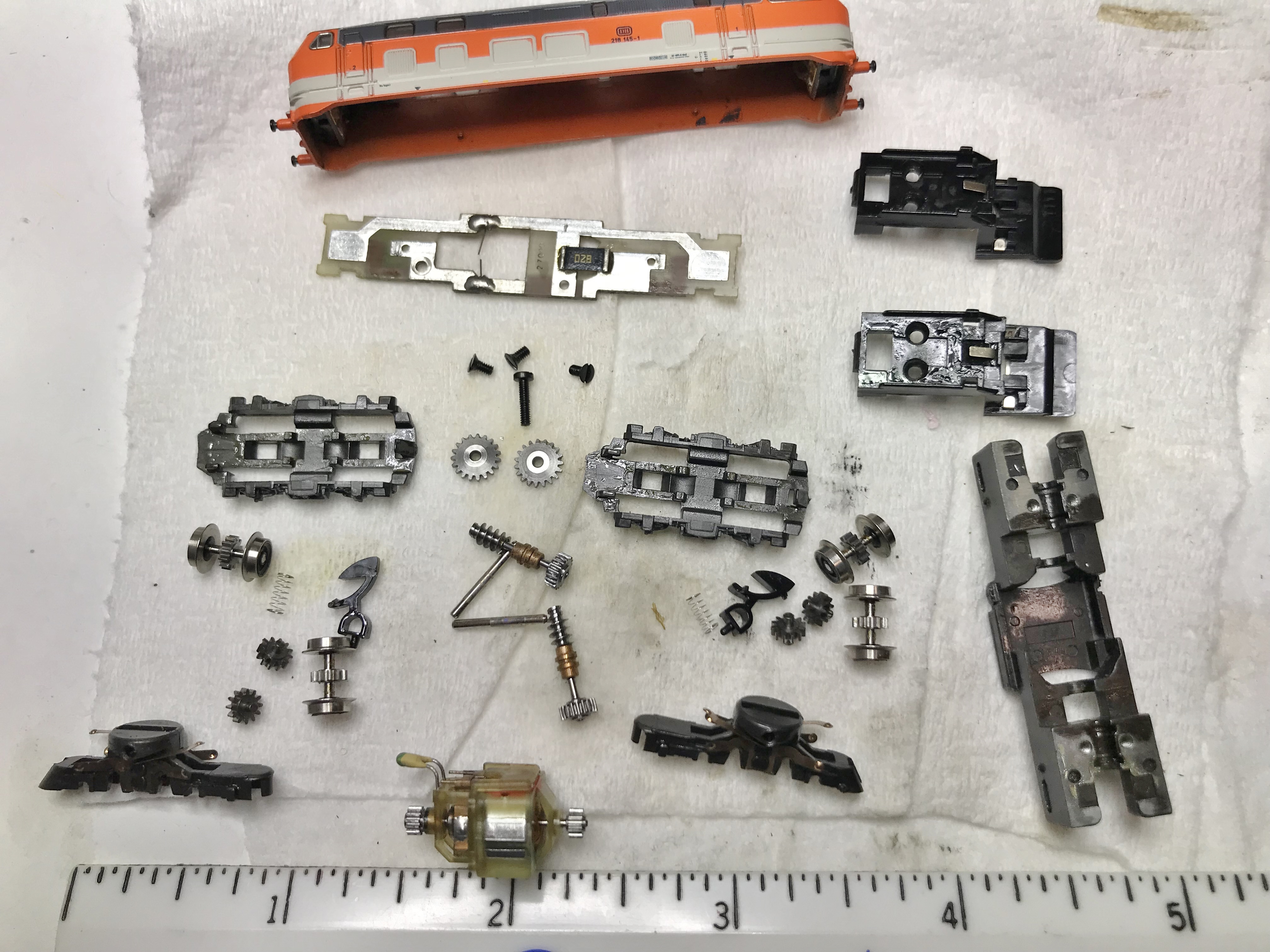
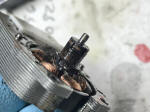
Märklin
Z Mikado with oil lock up issue click on
photos to enlarge
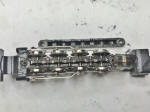

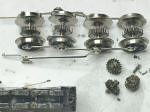
Märklin Z diesel with thickening oil and oil lock up
issue. Note the white residue that remains after all the oil is washed
away. this must be hand cleaned to remove all traces.
click on photos to enlarge
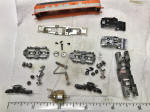 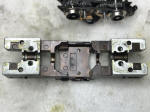   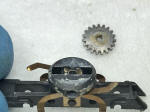 
Märklin Z Railcar with oil lock up issue
click on photos to enlarge
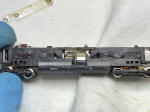 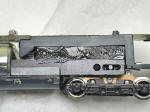 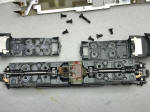
Additional information links:
 
What's included and how much does it cost?
Our normal labor charge is
$65.00/hr.
Your valuable
locomotives are treated with respect! Your locomotive is handled
carefully. All locomotives are completely disassembled, de-greased and
cleaned in an ultrasonic bath. We then reassemble with new parts where
necessary. This assures your locomotive is returned to its original
performance. Our normal labor charge is
$65.00/hr. This charge
covers most repairs and conversions. Parts when required are additional.
However, locomotives that require additional time due to the complexity of their
mechanism or require a lot of hand cleaning may go past one hour and additional
time is billed in 1/10th of an hour increments. Dual locomotives and sets
with dual locomotives like ICE and ABA diesels. are billed at the $65.00 rate
for each locomotive. |
